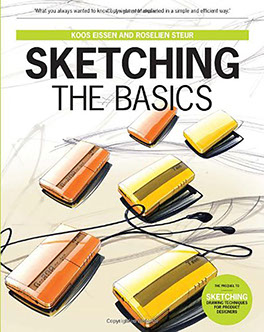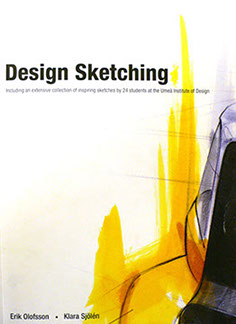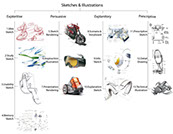DESN 132B — PERSP & RENDERING SYSTEMS II | SPR 2020 | M/W 1:00–3:45PM | HSD105
DESN 132B — Perspective and Rendering Systems 2
Day
Time
Class (Section)
RoomTerm
Instructor
Contact
Office
Office HoursMondays & Wednesdays
1:00 – 3:45 pm
03 (7640)
HSD 105Spring 2020
Michael LaForte
michael.laforte@csulb.edu
HSD 109
Mon: Noon – 1:00 pm
Tues, Thurs: 3:00 – 4:00 pm
and by appointmentZoom PMI: 786-783-3049
NOTICE: Due to the Coronavirus (COVAD-19) pandemic and mandate to self-isolate to minimize transmission of the outbreak, there will be no in-person meetings for the remainder of the 2020 Spring semester. All in-person meetings will be held via Zoom Conferencing. Effective 3/11/2020)
1.0 PREREQUISITES2.0 COURSE DESCRIPTION AND OBJECTIVES3.0 STUDENT LEARNING OUTCOMES (SLOs)4.0 CLASS PARTICIPATION AND ATTENDANCE5.0 WITHDRAWAL POLICY6.0 PROJECT VALUES AND GRADING SCALE7.0 CRITERIA FOR GRADING OF PROJECTS8.0 GRADING AND EVALUATION RUBRIC9.0 PENALTIES FOR ACADEMIC DISHONESTY10.0 SUBMISSIONS11.0 ACCOMMODATION12.0 CLASSROOM ENVIRONMENT13.0 HEALTH AND SAFETY AWARENESS14.0 BEACHBOARD, COMMUNICATION,
AND EMAIL POLICY15.0 COURSE TEXTS AND REFERENCES
1.0 PREREQUISITES
1.1 132A, or transfer equivalent. Students must provide evidence of completion of pre-requisite with passing grade of C or better (department passing criteria).
1.2 Letter grade only (A—F).
1.3 This is defined as a 6 hour laboratory class.
2.0 COURSE DESCRIPTION AND OBJECTIVES
Fundamentals of design drawing techniques include perspective, sketching, and rendering techniques for objects and environments.
2.1 This course builds on the student’s knowledge from the perspective drawing fundamentals course through more complex scenes, invented forms, and additional rendering techniques and practice.
2.2 This is a Professional Degree Program. Students in this class are expected to take their
work and time here seriously, professionally as it is a critical component of their degree.
2.3 Perspective drawing is a method for creating the illusion of 3-dimensional objects and/or spaces on a 2-dimensional surface; ie. paper. Rendering is the process of depicting
objects drawn through the use of shading, shadows, and color value. We DO NOT “Color”,
we Render.
2.4 This class will be challenging and be very time consuming. The student will gain knowledge, experience, and ability with increasingly complex projects. Each project will introduce new information that the student will need to understand in order to move on successfully.
2.5 Student's PRIMARY aim is to BUILD their skills and produce the Highest Quality of work for
their upper division Portfolio submissions, therefore there are no group or team projects.
All work must be completed individually.
In other words, this is a drawing class.
Saul Bass' advice to Design Students, "Learn to draw"
3.0 EXPECTED STUDENT LEARNING OUTCOMES (SLOs)
3.1 Upon successful completion of the course, the student will have:
3.1 A. Expanded understanding and application of perspective systems for
design communication,
3.1 B. Learned to incorporate rendering values in color using color theory using traditional (markers, pencils, ink, pastels, etc.) and/or digital media (Photoshop,
Sketchbook Pro, or similar) to convey visual concepts and/or ideas,
3.1 C. Learned to render a variety of materials, textures, and surface qualities
using traditional and/or digital media,
3.1 D. Will build upon the mechanics for Shadow Casting, Light Logic for Rendering,
and mirror reflections learned in their prerequisite course,
3.1 E. Used both technical drawing and/or sketching as an integral stage in
concept exploration and design development,
3.1 F. Developed critical thinking and time-management in design representation.
4.0 CLASS PARTICIPATION AND ATTENDANCE
4.1 It is impossible to do well in this class without regular attendance. Here's why. In-class Demonstrations are given at the start of each project as well as throughout the project life-cycle. An extensive amount of content is delivered and demonstrated each day. DO NOT UNDERESTIMATE THIS. It is imperative you come to class, are on time, and utilize your time effectively, or you will not keep up. Here's how quickly it all goes:
We have 30 total sessions (82.5 class hours) this semester minus day one and the Final, we are left with just 28 sessions. If we cover 4 projects, there will be 4 sessions devoted to Pinup Presentation Feedback, leaving just 24 working sessions to present new content and provide one-on-one feedback/assistance. That's just 6 class days per project, ie 3 weeks.
It goes FAST! Don't waste time!
4.2 Your success will depend a great deal on how effectively you utilize class time. It is the
best time to ask questions, get immediate resolution and clarifications, and move
forward efficiently with minimal frustration.
4.3 It is highly encouraged that you do as much work as possible during class.
4.4 It is highly encouraged that you work with friends and share knowledge outside of class as well.
4.5 Everyone learns differently. Have a buddy-partner you can collaborate with.
4.6 Expect a lot of homework each week, especially when combined with your other design classes. Do not procrastinate! Do not fall behind. Perspective and rendering projects should be an enjoyable process and is very rewarding when enough time, effort, and consideration
is put into it.
4.7 You CANNOT do all your work during class only. Department and University expectations (Student Unit Load) are that you will spend a MINIMUM of 2x the class time, outside of class each week. We are in class for 5.5 hours each week, which translates to an expected 11 hours each week outside of class.
4.8 Do not wait to the last night before an assignment is due to work on the project or ask questions, as you may have questions and it will be too late to receive answers and/or assistance.
4.9 If you are going to miss a class where an assignment is given make sure to ask the instructor
or a classmate for the additional information. Make friends and share contact information
with one another. It is the student’s responsibility to make up missed assignments.
4.10 Attendance is taken every day using Beachboard. The percentage of attendance is calculated as your Participation & Attendance grade (See 6.2.4).
4.11 Being more than 15 minutes late or leaving early may result in being unaccounted for,
ie. absence.
4.12 Students are allowed three permitted absences for emergencies, unexpected needs, and/or circumstances beyond their control as defined by the university policy. It is not necessary to provide an explanation of your absence(s) to the instructor.
4.13 The instructor may require students to provide documentation for excused absences. Valid excuses, defined by the university, include illness or injury to the student; death, injury, or serious illness of an immediate family member or the like; religious reasons; jury duty or government obligation; University sanctioned or approved activities (examples include: artistic performances, forensics presentations, participation in research conferences, intercollegiate athletic activities, student government, required class field trips, etc.).
4.14 P = Present; A = Absent (including excessively tardy); EA = Excused Absence
5.0 WITHDRAWAL POLICY
5.1 It is the student’s responsibility to withdraw from this course, if so desired. Instructor does
not drop anyone. Withdrawal from the course after the deadline is granted only under extenuating circumstances.
5.2 Doing poorly is not an extenuating circumstance, per department policy.
5.3 See the University's Enrollment Services Website for critical registration and withdrawal dates.
6.0 PROJECT VALUES AND GRADING SCALE
6.1 This is a Project-based Learning course. Attendance and Participation is critical for your success.
6.2 The student's final grade is comprised of 3 metrics, they are:
6.2.1 Projects (80%)
6.2.1.1 There will be 4 to 5 primary projects. Each worth 100 points each and will
be divided equally across Projects.
6.2.1.2 Projects may be broken into parts, such as Part 1 and Part 2, etc. at any time at the instructor’s discretion. Sub-assignments will be worth 100 points, divided equally across Projects.
6.2.1.3 A pop-quiz or in-class timed exercise may be given at any time. It will be worth 100 points. If the student misses this class the student will be
able to make up the quiz another day.
6.2.1.4 Grades are posted regularly on Beachboard with notification. Students should always know how they are doing in the class. It is the student’s responsibility to check their grades and confirm the grade given was entered correctly or any other errors were not made.
6.2.1.5 Evaluation, notes for improvements, of work is provided via verbal feedback in public Pinups at the Due date. Noes are also posted on Beachboard with each grade. The student may always inquire for more specifics regarding their grade.
6.2.1.6 Students may turn in assignments early if they plan to be absent on
a due date. There is no bonus for turning in an assignment early.
6.2.1.7 Late submissions are marked down 10 points for each class that it is late. After 3 class days, no additional penalty is assessed; the student’s grade would begin at a maximum of 70%, and points for errors, etc. deducted from there, taking the grade into D or lower range. Avoid being late! However, late work will always earn some points. 50% is better than zero.
6.2.1.8 REDOs. The opportunity to "Re Do" your work for points towards grade improvement. There are NO REDOs. Invest yourself and do it well the first time and apply the improvement going forward.
6.2.2 Attendance & Participation (20%)
6.2.2.1 Includes coming every day, being on time to class, staying the full session, being prepared, conducting oneself professionally, engaging in thoughtful discourse, being engaged, showing enthusiasm, actively participating in the dialog during critiques, etc.
6.2.2.2 Be sure to inform me when you know you will be unable to attend for
a university valid excuse. See 4.1.3.
6.2.2.3 Attendance is calculated based on the percentage of total attendance,
ie. 82% attendance will equal an 82.
6.2.2.4 You have an obligation to your classmates. The entire class is a working laboratory for design thinking, drawing, and discovery, ie. a “studio” of your teammates. When you show up unprepared for a pin-up, you fail to share your work with your teammates, and therefore fail to exchange in shared knowledge.
6.2.2.5 If it is a pin-up day and you cannot pin-up, you will be marked absent and/or will receive a minimum of one grade reduction. Only legitimate university excuses will be accepted for missing a presentation.
7.0 CRITERIA FOR GRADING OF PROJECTS
7.1 The following criteria is established by the university. See Final Course Grades, Grading Procedures, and Final Assessments for more details.
A = 90 + Excellence. Projects that meet all criteria, are professionally crafted and
submit on time. May have minor non-critical flaws. Work which goes above
and beyond expectations.
B = 80–89 Good. Projects that meet all criteria, are professionally crafted and submit
on time, with a few non-critical flaws. Competent, but not exceptional.
C = 70–79 Acceptable. Projects that do not meet all criteria, or are not professionally
crafted, have considerable flaws, or are late. Marginally acceptable.
D = 60–69 Weak. Projects that do not meet all of the criteria, and are poorly crafted,
and have substantial flaws, and/or is exceptionally late.
F = 59 or less — Unsatisfactory. Failure to complete any of the above.
Extremely sloppy and/or flawed.
7.2 It is the student's responsibility to understand, comprehend, and through one's work, demonstrate comprehension of the principles and concepts presented. Your work is
evidence of your thoughts, your process, and your understanding of the assignment principles. This is your job!
7.3 "I tried my best" has no bearing on the quality of your work. Similarly, the amount of time you spent does not determine the quality of your end product. You may need to work twice or three times as hard as a classmate. Your education is ultimately your responsibility.
8.0 GRADING AND EVALUATION RUBRIC
8.1 The following Rubric will apply in assessment of the student's work product, presentation,
and/or process on all assignments, sketchbooks, and/or in-class quizzes:
9.0 PENALTIES FOR ACADEMIC DISHONESTY
9.1 Violations of the university policy can result in a failing grade of “F” for this course and/or other sanctions. Plagiarism, taking credit for someone else’s work, is one of many forms of academic dishonesty.
9.2 See the General Policies and Regulations section in the University Catalog for more information.
9.3 Your work MUST be your work. If it you regularly do not work during class, then show up with amazing work with little evidence that you have worked on it I may have initiate an investigation, have you take an "evidence" quiz, or take other measures.
10.0 SUBMISSIONS
10.1 On Project due dates, pin-up and/or display your project at the start of class for verbal feedback
and discussion.
10.2 Work may or may not be collected for placing on display.
10.3 Photographic documentation will be required of the student in order to receive a grade. An invitation to your folder on Dropbox.com will be emailed to each student at their @student.csulb.edu account. Be sure to subscribe to the folder. Check your spam/junk mail folders for the invitation.
10.4 Submit photograph documentation, video, etc. to the Dropbox.com folder that has been created for you. It is the student's responsibility to ensure they have access to the folder in a timely manner so as not to lose points on their assignment(s).
10.5 Submit digital work in JPG format only, UNLESS otherwise directed or approved. Videos or other multi-media files may be submit in .mpeg or .mov formats. Keep file sizes as efficient as possible. Data space on Dropbox is limited.
10.6 File naming convention, name your files "Lastname-132B-S19-P#-descriptive.jpg"
(or .pdf, .mov, .mpg, respectively). Lastname = student's lastname; P# = the project number; descriptive = what view is it, is it a detail, a perspective, process, FINAL, etc. Feel free to include images of your process development work (sketches).
10.7 Grades will be marked down up to one letter grade for not following correct file naming and/or file type requests, as indicated above.
11.0 ACCOMMODATION
11.1 Students with a disability or medical restriction who are requesting a classroom accommodation should contact the Bob Murphy Access Center (BMAC) (formerly DSS) at 562-985-5401 or visit Brotman Hall, Suite 270 during 8am–5pm weekday hours. BMAC will work with the student to identify a reasonable accommodation in partnership with appropriate academic offices and medical providers. We encourage students to reach out to BMAC as soon as possible.
12.0 CLASSROOM ENVIRONMENT
12.1 The classroom is a place of learning. Please show respect for others with your speech,
volume, behavior, work area tidiness, attire, attitude, use of headphones, etc.
12.2 NO Headphones. Period. Even during work sessions. Daily there are topics that arise
and you will need to listen. I do not care to shout to you get your attention. You need to
listen to conversations around you that WILL BE relevant to your learning and work.
It is imperative that you check in, not out.
12.3 Phone calls and texting are not allowed in the classroom. Take calls outside.
If your texts are vitally important, then step out.
12.4 Please turn the ringer off on your phones before class.
12.5 Laptops are allowed during lab time ONLY if used for research purposes,
or as an assignment warrants.
12.6 Anyone found taking a test for another class during my class time, is not only blatantly disrespecting me personally, but neglecting their own work. You will be immediately
rejected from class and marked absent for the day. No exceptions.
12.7 Always bring your textbook to class to reference to better understand project related content.
12.8 Title IX. Title IX of the Education Amendments Act of 1972 (20 U.S.C. § 1681) is an all-encompassing federal law that prohibits discrimination based on the gender of students
and employees in educational institutions that receive federal financial assistance.
Best known for requiring gender equity in collegiate athletics, Title IX broadly prohibits discrimination on the basis of sex in any education program or activity. Sexual violence
is viewed under the law as an extreme form of hostile environment/sexual harassment.
Title IX states, “No person in the United States shall, on the basis of sex, be excluded from participation in, be denied the benefits of, or be subjected to discrimination under any education program or activity receiving federal financial assistance” (20 U.S.C. § 1681).
Office of the Title IX Coordinator
US Department of Labor, Title IX, Education Amendments of 1972
13.0 HEALTH AND SAFETY AWARENESS
13.1 Take safety very seriously. You do not want to get injured nor see your friend need to get
rushed to the hospital in the middle of the night.
13.2 Use common sense. Many art supplies can be toxic or dangerous. Read labels and use
your supplies in a responsible and healthy way. Please do not use spray adhesives
on your projects.
13.3 X-acto blades and similar cutting blades (even a sharp, hard lead pencil) are extremely sharp and can cause severe injury. Use caution when carrying and using them. Blades should be kept at a low angle when cutting. Ask me to demonstrate. If you have any questions, ask the instructor for demonstration of the safest technique(s).
13.4 CAUTION and PATIENCE when cutting. SLOW DOWN, no matter when your deadline is.
13.5 Your mental health is very important to all of us. Deadlines can be stressful and long hours can affect everyone differently. If you need help, please reach out to me, or get professional help from Counseling and Psychological Services (CAPS)
14.0 BEACHBOARD, COMMUNICATION, AND EMAIL POLICY
14.1 The course syllabus and assignments will be available on Beachboard. It is the student’s responsibility to access Beachboard and print the projects before each is introduced in
class. Students are accountable for comprehending written and verbal instructions and clarifications to projects. Each project will be explained in class where further detail
and examples will be given.
14.2 Communication is highly encouraged and expected for success. Responses will be made
in as timely a manner as possible in order to keep the student moving forward. However, immediate replies should not be expected, but will be honored within 24 hours. Responses should not be expected during off hours or during holiday breaks, but you will find I will
usually reply normally very quickly.
14.3 Responses will not be provided to material that was clearly covered during class for someone who was late to class, left early, or failed to attend. However, if a substantial number of students have the same or similar questions, these will be posted to the Beachboard blog.
14.4 Inappropriate e-mail is subject to university policy.
15.0 COURSE TEXTS AND REFERENCES
15.1 COURSE MATERIALS LIST CAN BE FOUND HERE
15.2 Every designer builds a personal library for their reference and development of their personal Visual Library—the stored visual references in your memory. The following books will benefit your drawing ability for years.
15.3 The latest edition is not necessary. Used books are just as good as new, so save money and buy older editions if necessary, or check them out from the Library.
15.4 I recommend traditional print over e-books; e-books are easier to carry around, but far more difficult to flag, note, and learn from, and they are easier to resell should you so choose.
15.5 Many e-books are available from: iTunes Store; Kindle Store; and CourseSmart.


 http://www.portfoliohandbook.com/PortfolioHandbook_UCID12.pdfDesign Sketching by Erik Olofsson and Klara Sjolen. ISBN 978-91-976807-0-7 www.designsketching.comSketching: The Basics by Koos Eissen and Roselien Steur. BIS Publishers.
http://www.portfoliohandbook.com/PortfolioHandbook_UCID12.pdfDesign Sketching by Erik Olofsson and Klara Sjolen. ISBN 978-91-976807-0-7 www.designsketching.comSketching: The Basics by Koos Eissen and Roselien Steur. BIS Publishers.
ISBN 978-90-6369-253-7HIGHLY RECOMMENDEDFREE DOWNLOAD!
TUTORIALS & HOW-TO GUIDES

FREE DOWNLOAD

Drawings are “the red thread” which traces thought itself across time
“The drawings are an indication of the idea and attitude that the architecture has….Technology is a cruel tool, because what it does is defer the possibility of the student being creative. The student can take an algorithm, produce 50 alternatives to the same problem … It takes away from you the possibility of value judgment.”
—Peter Eisenman
10 Things that Require ZERO Talent
1. Being on time
2. Work ethic
3. Effort
4. Body Language
5. Energy
6. Attitude
7. Passion
8. Being coachable
9. Doing extra
10. Being prepared
REMINDER / ADVICE !!
This is a "Skill-building class. Throughout this class, focus on developing your VISUAL COMMUNICATION skills (sketching, rendering, etc.) and confidence, first and foremost. I am here to guide, coach, and assist you, and assess a value to the work product you create, but not do your work for you.
“The greater danger for most of us lies not in setting our aim too high and falling short; but in setting our aim too low, and achieving our mark.”
—Michelangelo
Are you focused
on your grade,
or on the quality
of your work?
^
* Estimate only. See instructor and calendar for specific due dates. Summer Session schedule is more compressed with one week equal to approximately two and half semester weeks.
CSULB | COTA | DEPARTMENT OF DESIGN | BIO

Questions, feedback, suggestions?
Email me with your recommendations.
©2020 Michael LaForte / Studio LaForte, All Rights Reserved. This site and all work shown here is purely for educational purposes only. Where ever possible student work has been used or original works by Michael LaForte.
Works by professionals found online or in publication are used as instructional aids in student understanding and growth and is credited everywhere possible.